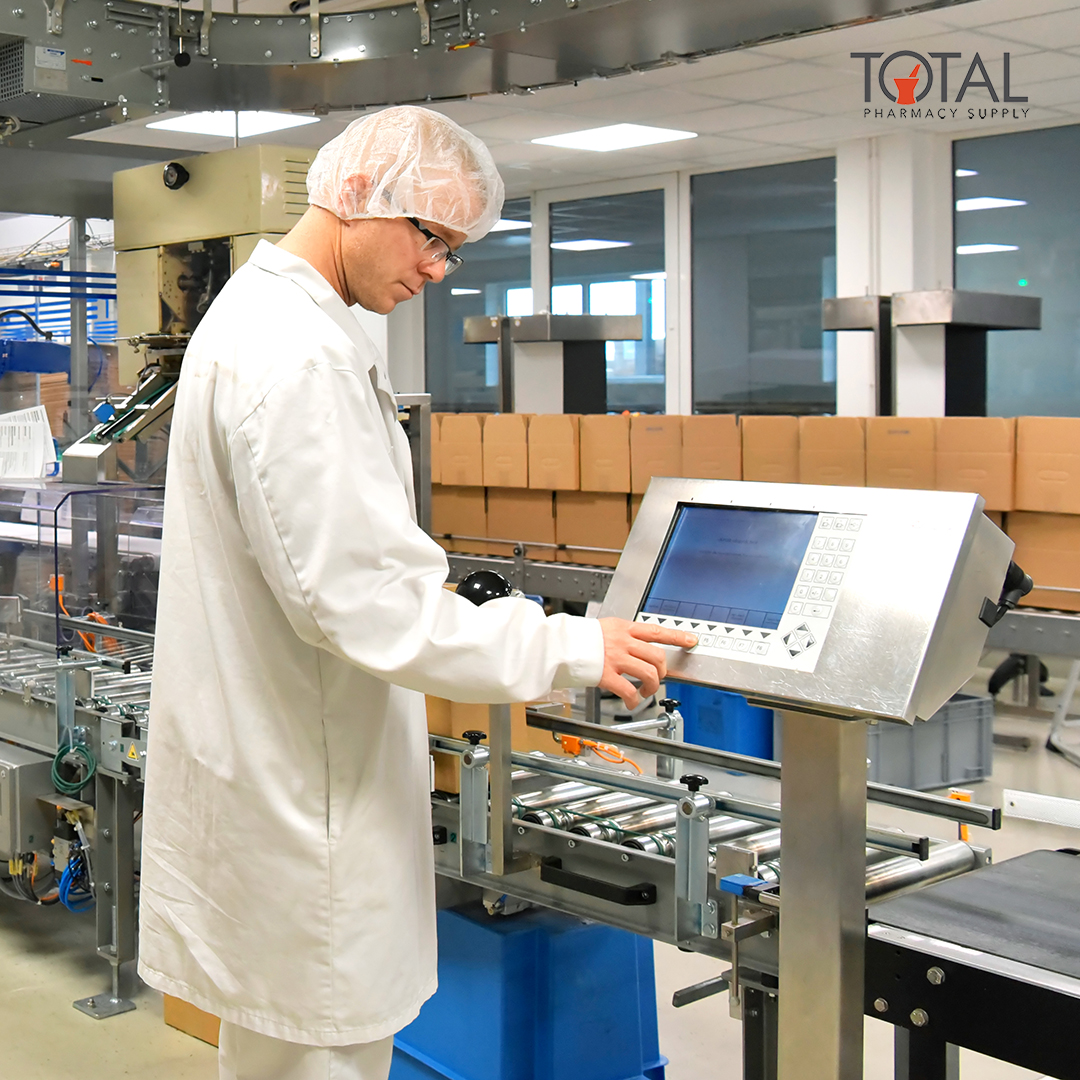The Evolution of Pharmacy Automation: How Technology is Changing the Industry
Posted by Total Pharmacy Supply on Jan 3rd 2024

The field of pharmacy has undergone a remarkable transformation in recent years, reflecting major Pharmaceutical Industry Trends. From traditional pharmacies to the emergence of online platforms, the way we obtain medications has evolved significantly.
With about 4.73 billion prescriptions dispensed in 2022, the need for greater efficiency and accuracy has never been more important. This need has catalyzed a significant shift in the pharmacy landscape - the advent of automation. This change isn't merely about new equipment; it's a comprehensive revolution in pharmacy operations, leveraging technology to improve both efficiency and patient care.
The Dawn of Pharmacy Automation
In the past, pharmacies were known for their manual processes of counting, filling, and dispensing medications to a large extent. The pharmacists' skill and attention to detail were the only things that made these tasks accurate and efficient. From counting pills to managing inventory, every aspect required hands-on attention, leaving room for human error and inefficiency.
Automation marked the beginning of a new era in pharmacy operations, one where technology began to augment the capabilities of pharmacists.
Benefits of Pharmacy Automation
The introduction of automation in pharmacy processes has brought numerous benefits. Firstly, the dispensing of medications has seen remarkable improvements. Automated systems reduce the risk of human error, ensuring patients receive the correct medication and dosage. This precision directly enhances patient safety and compliance with treatment regimens. Additionally, pharmacies have observed a notable reduction in the time and resources spent on manual tasks, leading to cost savings and allowing pharmacists to focus more on patient care and less on administrative duties.
Advancements in Pharmacy Technology
Recent years have witnessed several significant technological advancements within the pharmacy sector:
- Automated Dispensing Cabinets (ADCs): Improving patient safety is important in any healthcare industry. Automated Dispensing Cabinets are primarily used in pharmacies and hospitals to streamline the process of storing, dispensing, and managing medications. First introduced in the late 1980s, ADC technology was slow to take hold but as of 2008, over 80 percent of hospitals had adopted ADC systems. ADCs have become a staple in many pharmacies, providing secure, accurate, and efficient medication dispensing.
- ADCs provide a secure environment for storing medications
- ADCs use barcode scanning to ensure accurate dispensing
- ADCs automate many manual tasks
- ADCs minimize drug diversion
- Telepharmacy: This innovative approach has broken down geographical barriers in healthcare delivery. Telepharmacy allows pharmacists to provide services remotely, including patient consultations, medication therapy management, and even remote supervision of dispensing. This is particularly beneficial in rural or underserved areas, where access to pharmacy services may be limited. Telepharmacy platforms often include video conferencing and secure digital portals for managing prescriptions.
- Medication Therapy Management (MTM): MTM services, bolstered by technology, are designed to optimize medication use and improve patient health outcomes. Pharmacists use specialized software to review and manage patients’ medication regimens, ensuring that each medication is appropriate, effective, and safe. Patients with multiple chronic conditions, polypharmacy, or those who require special consideration in their treatment plans find this service particularly important.
- Prescription Drug Monitoring Programs (PDMPs): PDMPs are state-run electronic databases that track the prescribing and dispensing of controlled prescription drugs. The use of these platforms is crucial in tackling prescription drug abuse and misuse. They help pharmacists and healthcare providers identify potentially harmful prescribing patterns, prevent drug interactions, and ensure safe medication use. By providing real-time data, PDMPs contribute significantly to informed prescribing and dispensing decisions.
There are numerous benefits of ADCs; here are a few:
Overall, ADCs play a critical role in modernizing pharmacy operations, enhancing both operational efficiency and patient safety.
Impact on Pharmacists and Pharmacy Staff
Pharmacy automation has significantly altered the role of pharmacists and their staff. The burden of repetitive, manual tasks has been reduced, allowing pharmacists to focus more on direct patient care, such as counseling and medication management. This shift has also brought about the need for new skill sets, as pharmacists are now required to manage sophisticated technology and adapt to changing roles in healthcare delivery.
Challenges and Considerations
While the benefits are clear, the integration of technology in pharmacies is not without challenges. The adoption of new systems requires significant investment and training. Moreover, there is a need to balance technological efficiency with personalized patient care, ensuring that the human element in healthcare is not lost. Additionally, ethical concerns and data security issues are paramount in this digital transition.
Conclusion
The evolution of pharmacy automation is a significant milestone in the pharmaceutical industry. It marks a shift from traditional practices to a more efficient, safe, and patient-centric approach. Suppliers like Total Pharmacy Supply are essential in supporting pharmacies through this transition.
As the industry evolves, pharmacists and pharmacy owners need to consider if adopting these advances is the right choice for their pharmacy and patients. They are not only improving their operations but also helping to improve the quality of care for patients.
